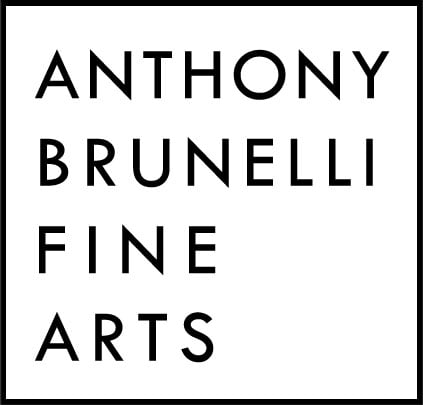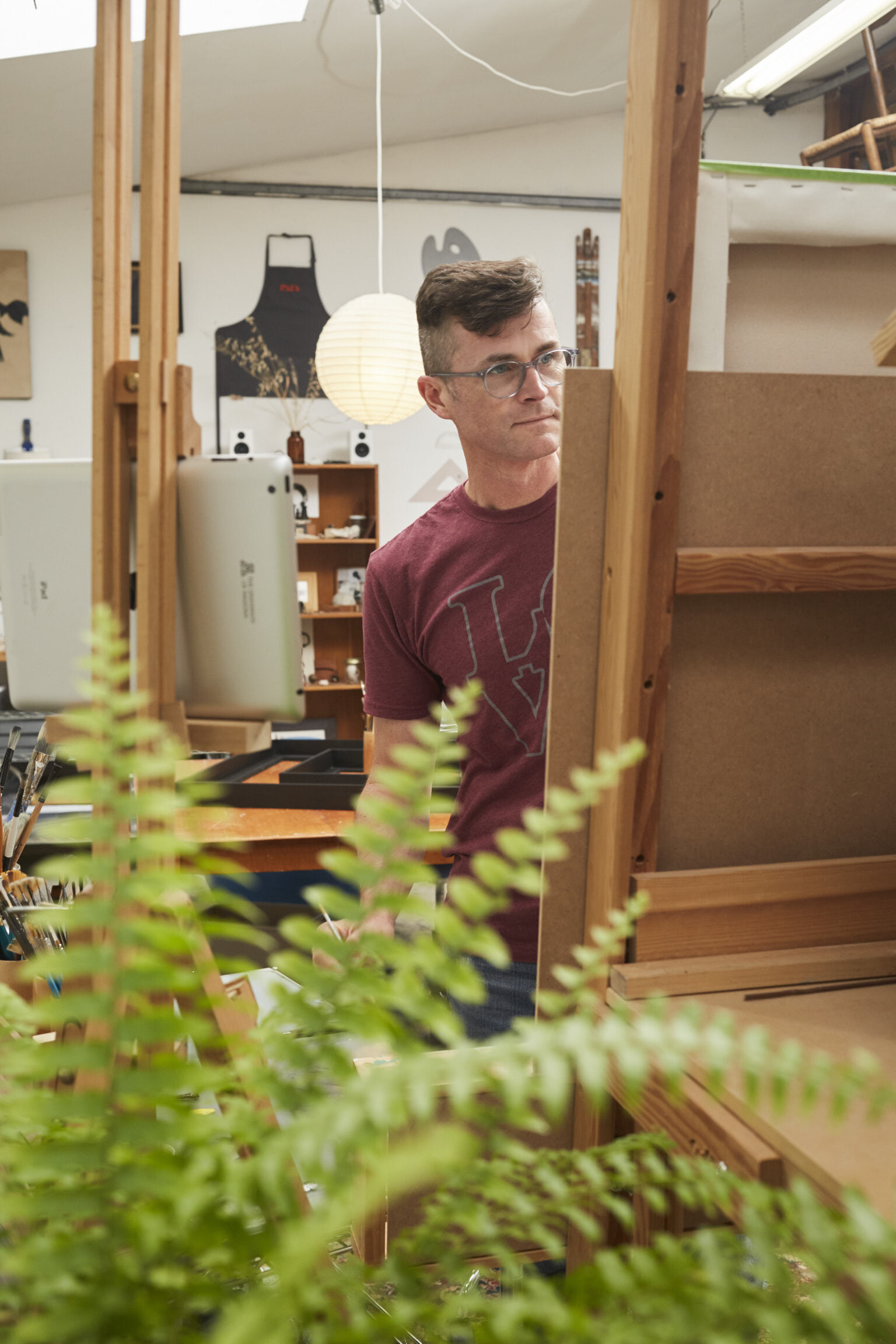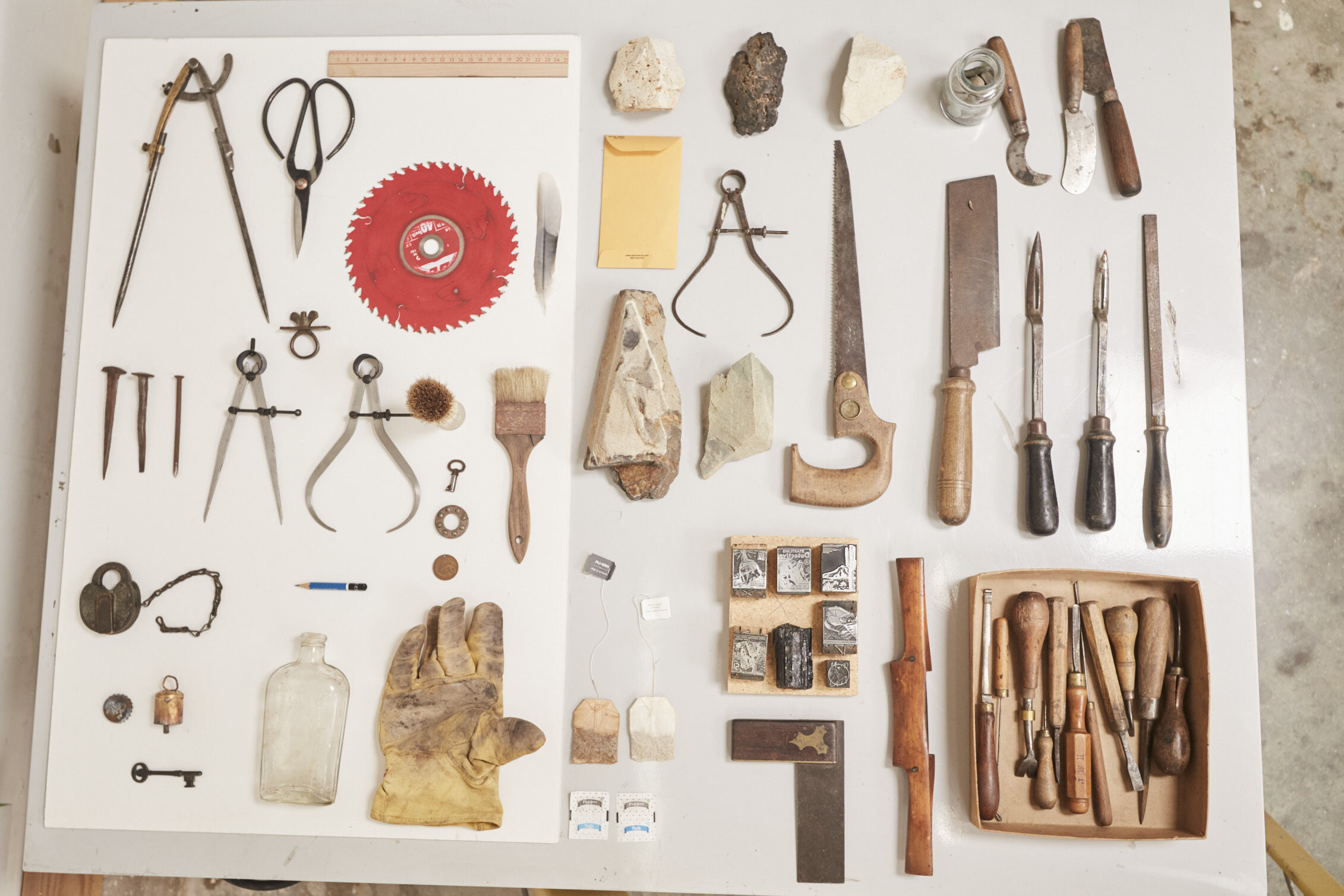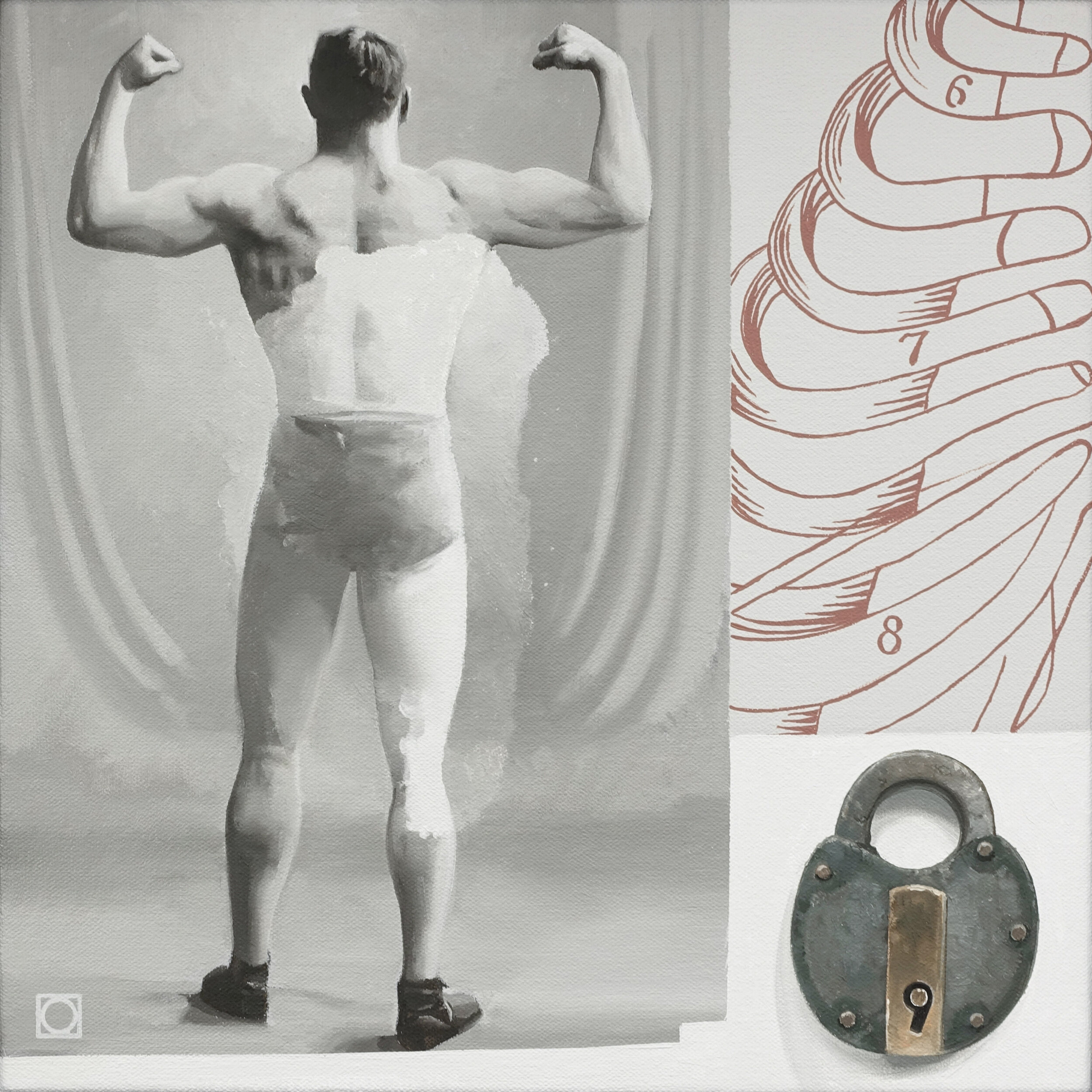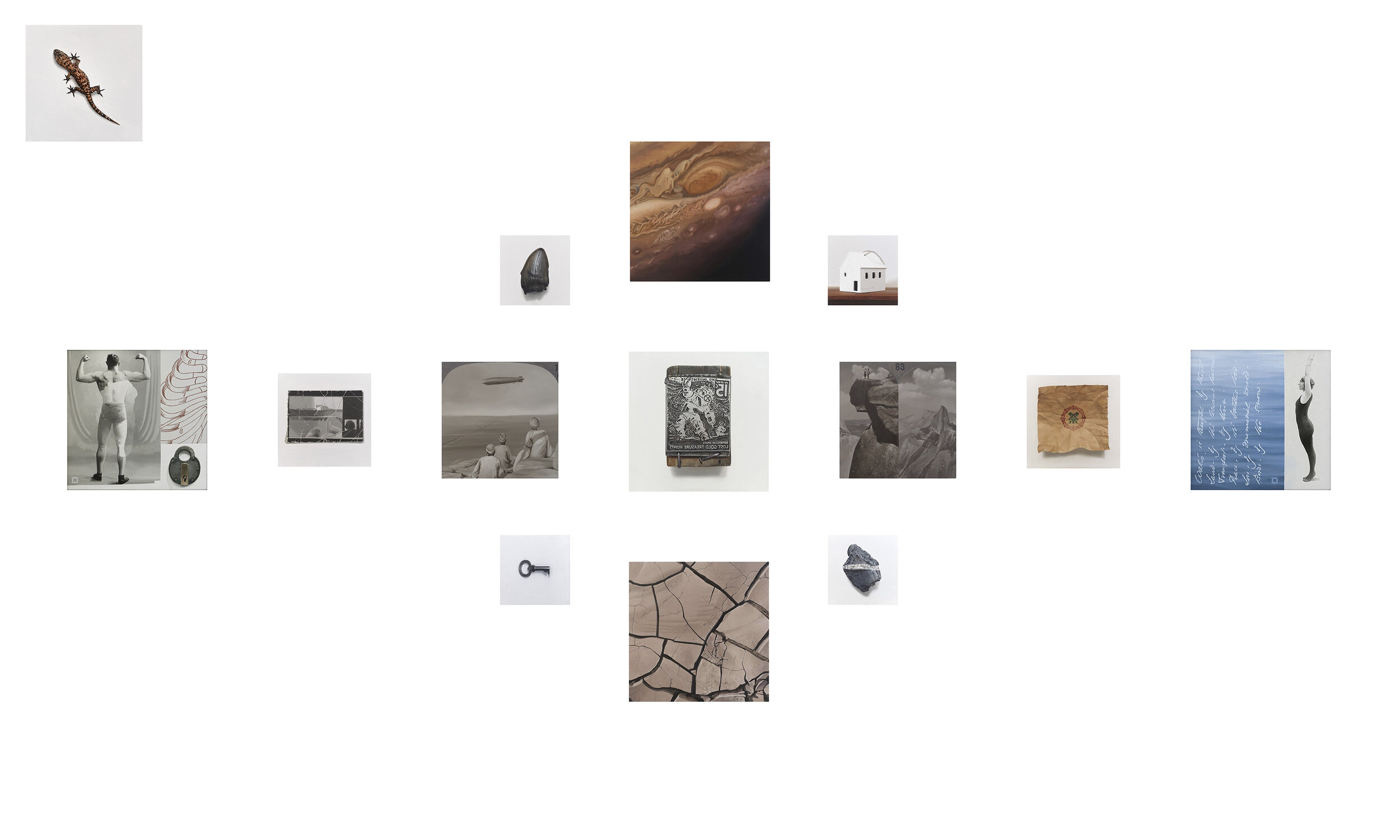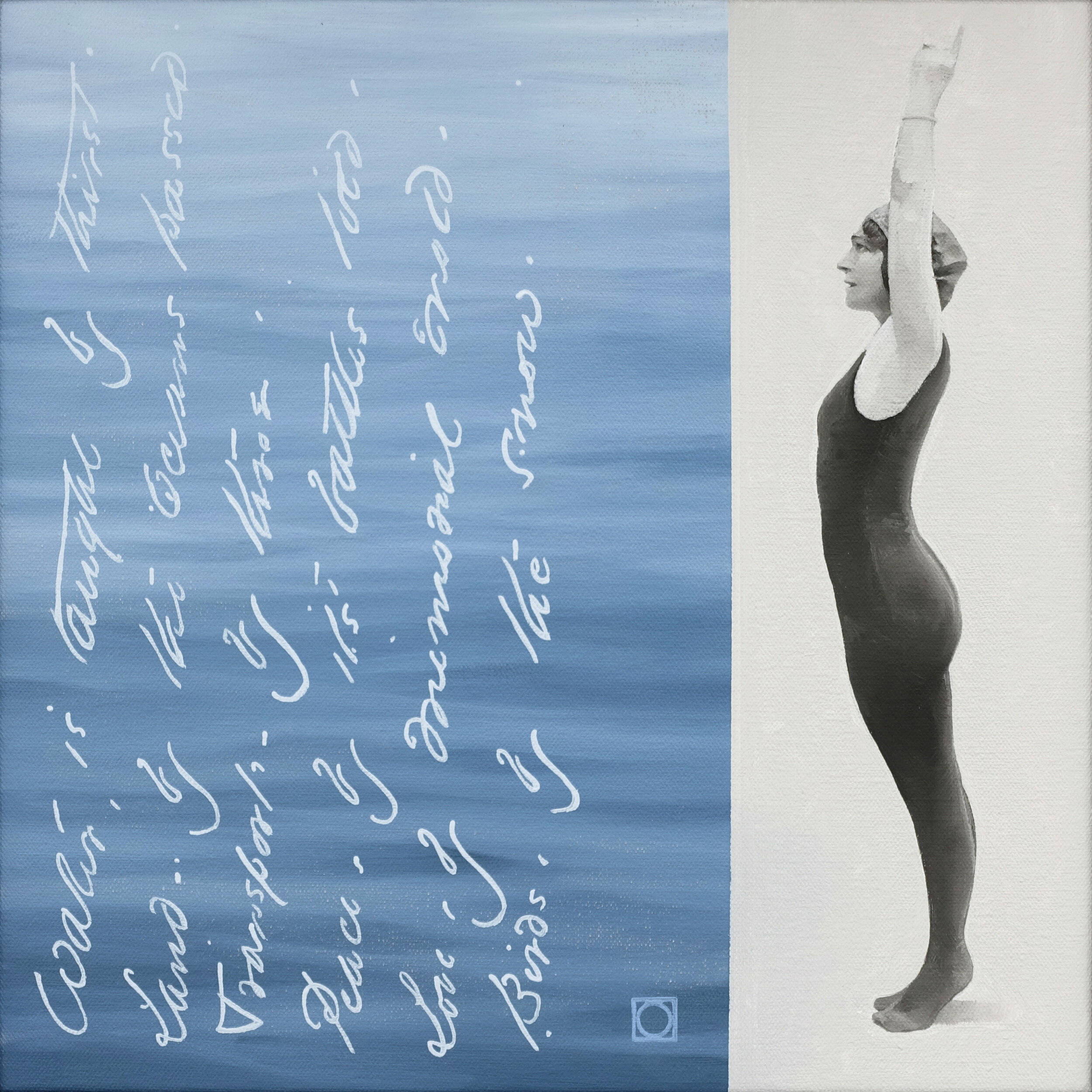In the most recent installment in our Artist Insights, Benjamin M. Johnson (American, b. 1976) discusses his artwork, passion for the sciences, and speaks in depth on paintings included in his Between the Earth and Jupiter series.
I’ve had a lifelong interest in science. As a teenager, I felt an equal pull towards a career in the sciences as I had for the arts. While I chose to go to art school, I have woven scientific field work and research into my studio practice. This has shown me that we are surrounded by incredible stories that transcend time.
Between the Earth and Jupiter is a series of paintings that explores perception and connection. Very often when we hold an object in our hands, it can seem like a plain and singular thing in the world. A deeper investigation however, always reveals more. There are always connections. A simple, utilitarian paper tea wrapper for instance, intended to be discarded after use, has a deep story in its creases and folds. A story of the long tradition of tea as a historically important beverage is woven into those paper fibers, as are the impacts of globalization.
These paintings are less about themselves, and more about how they connect to each other. The paintings of objects are further drawn out by the paintings that focus on place or perception. A small key bearing the imprint “Starlock Works” juxtaposed with a view of the swirled, abstract face of Jupiter, poetically reinforces the fact that the universe is the container for all things large and small, and that we are all starstuff. A painting of a close-up view of a Stereoview card from the early 1900’s shows two people dwarfed by the landscape of Yosemite, and the image split by the stereoview cropping. This is contextualized by another painting of a small, bisected rock collected in the field. It appears almost mountain-like, and coaxes a re-evaluation of how we orient ourselves to scale, and how perception is relative.
Two paintings from this series that are unique from the others are “Lock” and “Taught by Thirst.” They incorporate elements of trompe l'oeil and historic images of two athletes, a swimmer and a wrestler. These pieces explore gender roles and seek a non-binary place between them when placed in the context of the whole series. “Lock’s” central subject of toxic masculinity pairs the wrestler with an emotionless rib cage diagram and a heart shaped lock. What key could unlock it? Or break it? Or illuminate why it was locked in the first place? The swimmer, Annette Kellermann is paired with a poem by Emily Dickinson painted to faithfully articulate her elegant handwriting:
Water, is Taught by Thirst.
Land-by the oceans passed.
Transport-by throe-
Peace, by its battles told-
Love, by memorial mold-
Birds by the snow.
This poem is fitting to me of Annette’s life story, and is also to me a quiet poem about wisdom and perspective. This poem paired with another painting in this series, “Santa Cruz” featuring Tucson’s cracked, dry Santa Cruz river bed gives me a wider palette of thought to bring to the startling realities of climate change.
The work in this series draws from a historical tradition of representational painting, but they aim for a contemporary, open, conceptual narrative. I’m a classically trained painter. I studied at the Pennsylvania Academy of the Fine Arts, and there I was taught the traditional techniques of drawing and painting. These will always be continually unfolding areas of growth for me, but rather than paintings being an end unto themselves, I want paintings to inspire questions and investigation. I like paintings that make me think.
